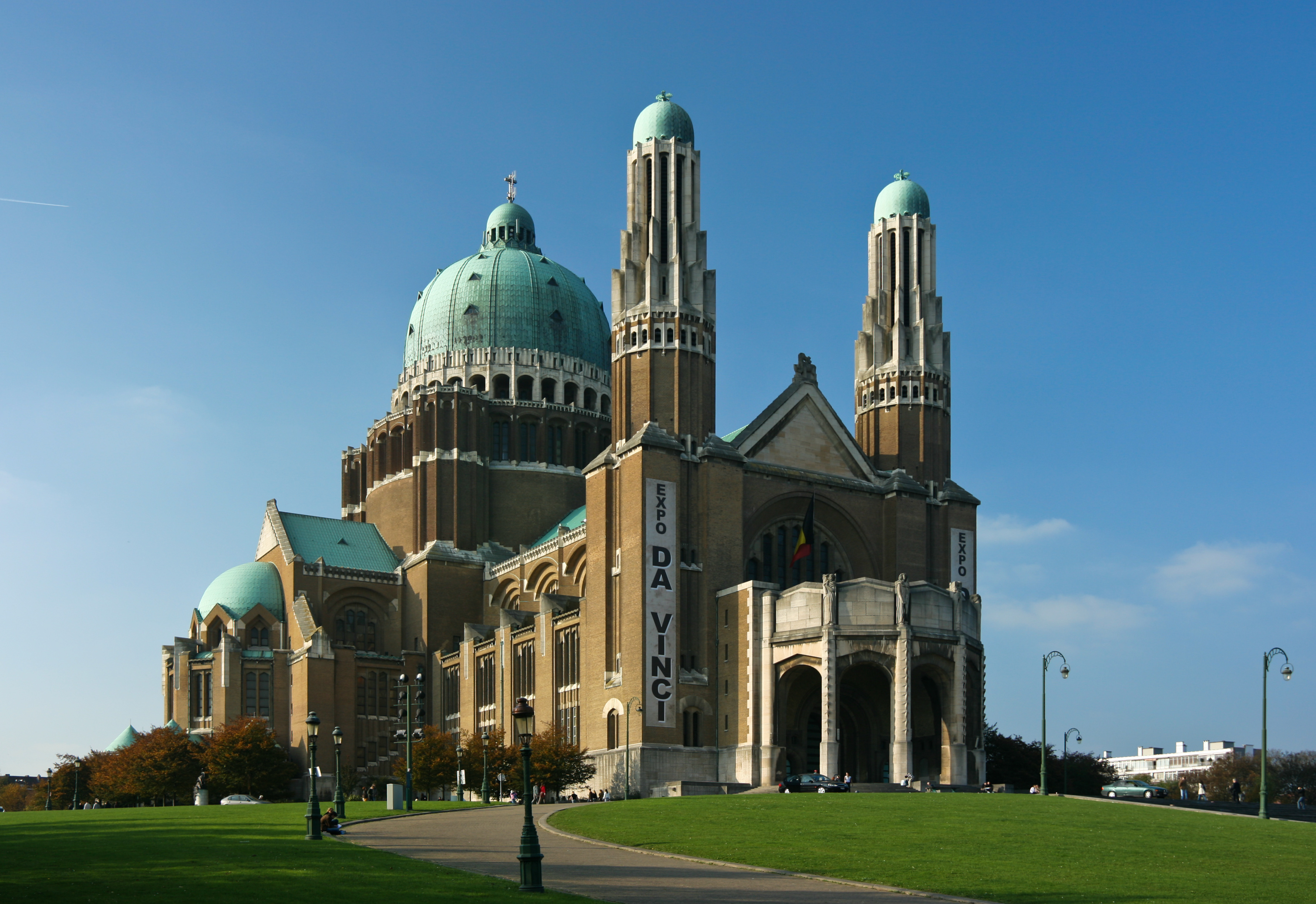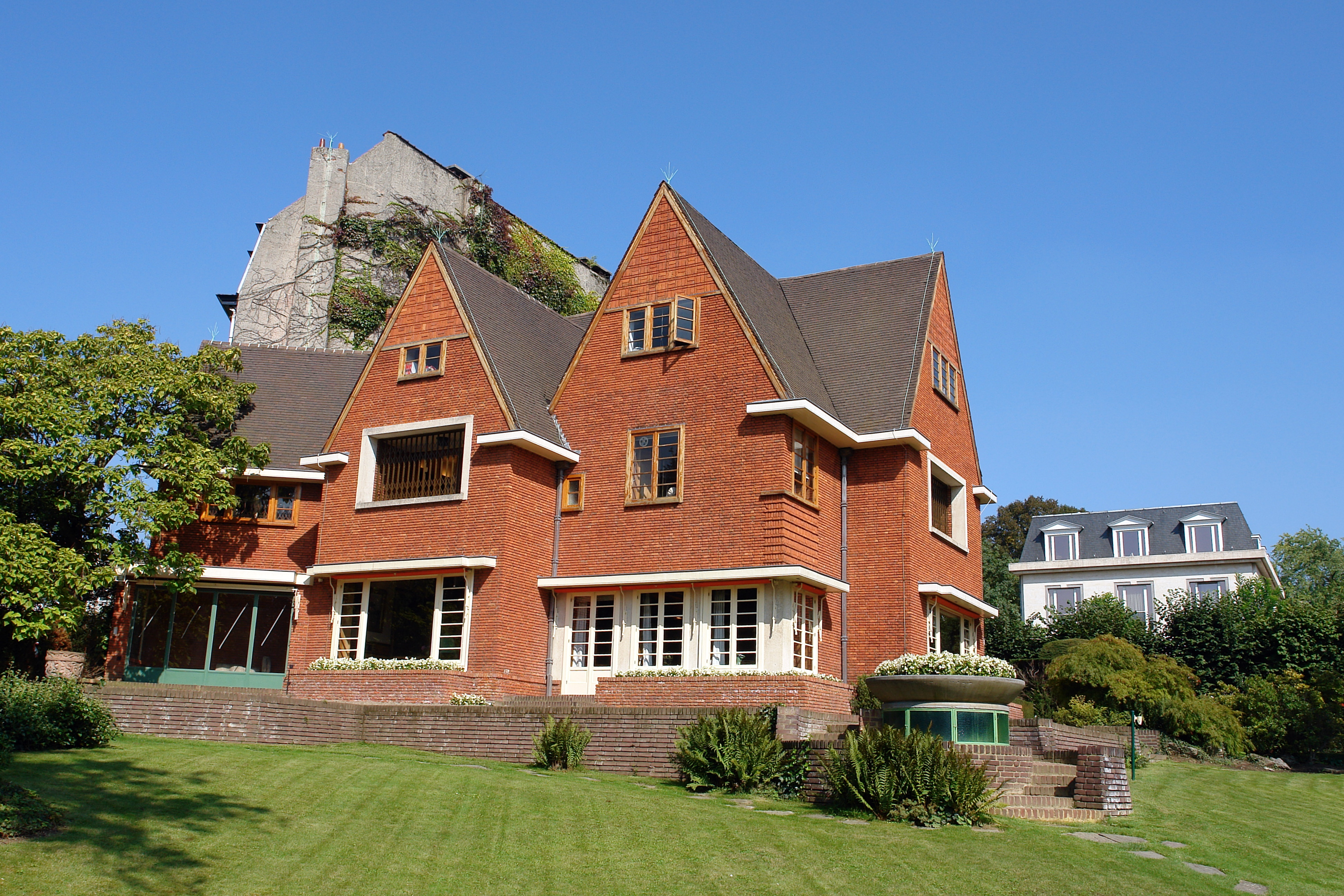October 5 is World Architecture Day! To celebrate, I’ve compiled some of the finest architectural marvels in Brussels, a city known for its Art Deco and Art Nouveau architecture. Brussels was also home to some of the twentieth century’s greatest architects, including Victor Horta, Paul Hankar, Paul Cauchie, and Ernest Blérot.
The Belgian capital was a hub of pioneering Art Nouveau artists and architects at the end of the nineteenth and early twentieth centuries. Art Nouveau eventually gave way to Art Deco, another movement that left its mark on the city. Many of the buildings designed during both eras are still standing and some are even open to visitors.
Art Nouveau Architecture in Brussels
Art Nouveau is a decorative style of art that was popular between 1890 – 1910 in Europe and the United States. The artistic movement was a reaction against more traditional forms of art like eclecticism and historicism. Art Nouveau’s major characteristics are:
- Dynamism, movement
- Organic, sinuous lines inspired by nature/plants
- Asymmetry or whiplash lines
- Use of modern materials like iron, glass, ceramics, or concrete
Art Nouveau took its name from Belgium and France, where new works of applied art (architecture, furniture, jewelry, etc.) were dubbed “new art” in French, thus, Art Nouveau. Brussels was one of the birthplaces of Art Nouveau, and its most famous architect was Victor Horta. The city has nine marvelous Art Nouveau buildings that are worth seeing.
1) Tassel House

Tassel House was designed by Victor Horta for scientist and professor Emile Tassel, between 1892 – 1983. The house is the first where Horta used his new style and later became known as the first Art Nouveau building. Tassel House is a UNESCO World Heritage site, along with other Horta sites in Brussels.
Address: Rue Paul Emile Janson, 1000 Brussels
2) The Horta Museum

The Horta Museum is dedicated to the life and work of the “Father of Art Nouveau” himself, Victor Horta. The property was Horta’s home for 20 years and later turned into a museum. Visitors can learn about Horta’s life as well as Art Nouveau. The museum is open during the pandemic, albeit with some special restrictions.
Address: 25 Rue Américaine, 1060 Saint-Gilles, Brussel
Read: The 5 Best Museums in Brussels
3) The Autrique House

The Autrique House was another one of Horta’s early works. The house was pivotal to the development of the Art Nouveau style and is considered an integral part of Brussels’ architectural heritage. The house has been renovated and features a scenography to present the residence as it once was.
Address: Chaussée de Haecht 266, 1030 Schaerbeek, Brussels
4) The Cauchie House

The Cauchie House was designed by architect, artist, and decorator Paul Cauchie for himself and his wife in 1905. The outside features Cauchie’s famous Art Nouveau-style engraved drawings. The house is open for visits the first weekend of every month.
Address: 5 Rue des Francs, 1040 Etterbeek, Brussels
5) Solvay House

Another Horta masterpiece, the Solvay House was built in 1894 for chemistry magnate Armand Solvay. The house is also part of the UNESCO World Heritage listing for Horta buildings in Brussels. Solvay is privately owned, but visits are allowed upon request.
Address: Avenue Louise 224, 1050 Ixelles Brussels
6) The Old England building

The Old England building houses the Museum of Musical Instruments (MIM), and is just across the way from Brussels’ Mont des Arts. Constructed as a department store by architect Paul Saintenoy in 1898 – 1899, the building is a striking example of Art Nouveau with dark metal and glass façade. The MIM closed in March this year for the pandemic and will reopen in November after some construction work is finished.
Address: Rue Montagne de la Cour 2 1000 Brussels
7) Van Eetvelde House

The Eetvelde House is another Horta building declared as a UNESCO site in Brussels, another crowning achievement in Art Nouveau architecture in Brussels. Commissioned by politician and general secretary of the Conge Free State Edmond van Eetvelde, the project allowed Horta to push his artistic boundaries. The owner of the house allows visitors, but you must make a request first.
Address: Avenue Palmerston 4, 1040 Etterbeek, Brussels
8) Saint-Cyr House

The Saint-Cyr House was built by architect and Victor Horta pupil, Gustave Strauwen. Elements of Art Nouveau architecture are intertwined with a Baroque style, notably with the façade’s wrought-iron gables. Official opinions on the house were divided until recently, as many professional architects used to consider the building’s design too haphazard. Now, it’s regarded as a masterpiece and one of many Art Nouveau jewels of the city.
Address: Square Ambiorix 11, 1000 Brussels
9) The Belgian Comic Strip Center

The Belgian Comic Strip Center is a museum and resource library dedicated to comic books. The building is another Horta design, commissioned by textile merchant Charles Waucquez to be a warehouse. The government had to save the old warehouse from being demolished in the 1980s. The Comic Strip Center is open during the pandemic, but you must book online ahead of time and follow a strict path during the visit.
Address: Rue des Sables 20, 1000 Brussels
Art Deco Architecture in Brussels
Brussels was the scene of Art Nouveau architecture in its heyday, and still is. But the city is home to several noteworthy Art Deco masterpieces too, which tend to get overlooked.
Art Deco originated in Paris in the 1920s and became a popular decorative arts and architectural style in western Europe and the United States in the 1930s. The movement favored elegant sophistication while rejecting tradition. Some characteristics of Art Deco style are:
- Modernism in applied arts (fashion, architecture)
- Simple lines with a “streamlined” look
- Geometric or stylized ornamentation
- Expensive, man-made materials like plastics, Bakelite, vita-glass, and ferroconcrete
- Natural materials like jade, silver, ivory, obsidian, chrome, and rock crystal
Art Deco differs from Art Nouveau primarily in its lines. An Art Deco house will have straight lines with geometric patterns while an Art Nouveau house will have sinuous, “natural” lines.
1) Stoclet Palace

Stoclet Palace is the third UNESCO site in Brussels. The other two are the Grand Place and a collection of Horta buildings. The mansion predated the Art Deco movement by a few years and is considered an elegant combination of Art Nouveau and Art Deco styles. It was designed by Austrian Josef Hoffman. Unfortunately, the residence is owned by a private individual and they do not allow visitors, even upon request.
Address: Avenue de Tervueren 28, 1150 Woluwe-Saint-Pierre, Brussels
2) Résidence Palace

The Residence Palace was designed by architect Michel Polak in 1922 as a living complex complete with apartments, a swimming pool, and a theater. Part of the palace was converted into the Europa building in recent years, where members of the European Council and their staffers work. The Residence Palace is also used for events.
Address: 155, Rue de la Loi 1040 Etterbeek, Brussels
3) Villa Empain

Villa Empain was built in the 1930s for 21-year-old Baron Louis Empain. Both inside and out, the villa is a marvel of Art Deco architecture in Brussels. The Boghossian Foundation, now runs the villa, opening the property for visitors. It was closed during the pandemic but will reopen October 22.
Address: Avenue Franklin Roosevelt 67, 1050 Brussels
4) Koekelberg Basilica

Weathering two World Wars, the Koekelberg Basilica wasn’t finished until 1969. The massive basilica was designed by Albert Van Huffel, who won the Grand Prix in Architecture for the basilica’s scale model at the 1925 “Exposition Internationale des Arts Décoratifs et Industriels Modernes” (the expo Art Deco gets its name from).
Address: Elisabeth Park, 1083 Brussels
5) L’Archiduc

L’Archiduc is Brussels’ most famous jazz club, where greats like Miles Davis used to jam. Built in 1937, this legendary bar is famous for more than its musicians. It’s also a testament to Art Deco architecture of the era.
Address: Rue Antoine Dansaert 6, 1000 Brussels
6) Bozar

Brussels’s Centre for Fine Arts, more commonly called Bozar, was designed by Art Nouveau master Victor Horta. This project came near the end of his career, when he was experimenting with cubism. Many consider Bozar a precursor to the Art Deco movement for this reason. It’s is open currently, and hosting some social-distance friendly events.
Address: Rue Ravenstein 23, 1000 Brussels
7) Saint-Augustin Church

This Roman Catholic church, built between 1932-1935, is one of three churches in Brussels constructed with reinforced concrete. Because of its Art Deco architecture, the building received protected status in 1988.
Address: Place de l’Altitude Cent, 1190 Forest, Brussels
8) Van Buuren Museum

The Van Buuren Museum is one of the city’s finest examples of Art Deco home décor. As the home of David and Alice Van Buuren, the house became a work of art, complete with painting collections and decorative items by French, Dutch, and Belgian designers. The museum is open to visitors but you must book in advance.
Address: Avenue Léo Errera 41, 1180 Uccle, Brussels
9) Flagey

Designed by Joseph Diongre to resemble a steamboat, Flagey is an Art Deco gem that imposes on Flagey Square in Ixelles. The acoustics in the building are second-to-none since it was the home of the RTBF (Belgium’s francophone radio and television broadcasting service) and now houses the Brussels Philarmonic. Flagey is open for film screenings, concerts, and other events during the pandemic but you should always double-check their website before attending.
Address: Place Sainte-Croix, 1050 Brussels

More resources about Art Deco and Art Nouveau architecture in Brussels
- visit.brussels has a page full of articles and links about Brussels architecture
- A book about Victor Horta’s life and work in Brussels
- Learn about modern Brussels architecture from Arch Daily
Featured Image: Villa Empain. Credit: photo by Fred Romero shared under a CC BY 2.0 license.


https://shorturl.fm/ivglF
https://shorturl.fm/hLKjD